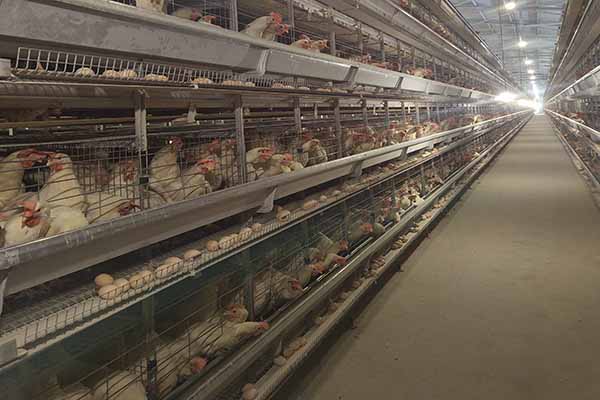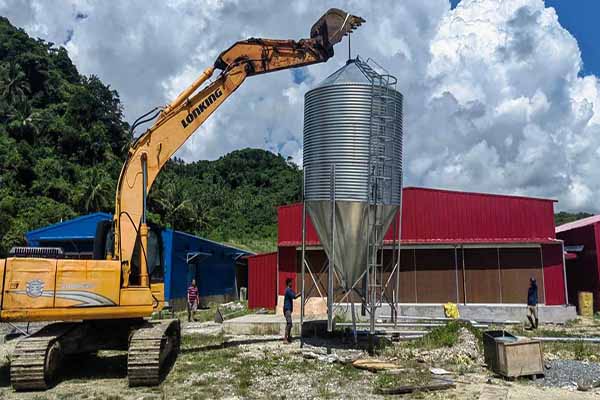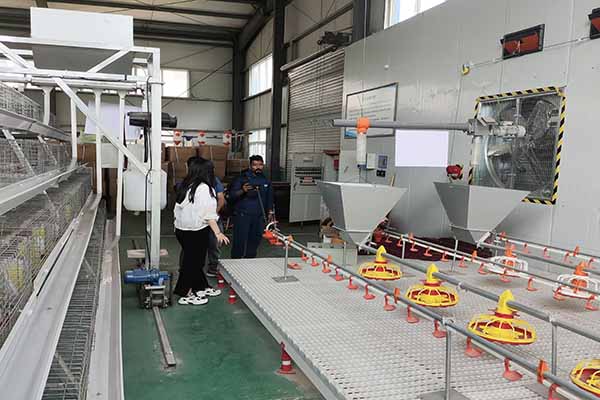Ranking of Cost-Effectiveness of Automated Equipment for Tanzanian Chicken Farms
Time : 2025-07-01
In recent years, the poultry industry in Tanzania has witnessed significant growth. With the increasing demand for chicken meat and eggs, there is a growing need for efficient and cost-effective solutions to enhance production. One such solution is the use of automated equipment in chicken farms. This article aims to rank the cost-effectiveness of various automated equipment options for Tanzanian chicken farms, providing insights into the best investments for farm owners and stakeholders.
Introduction to Automated Equipment in Chicken Farms
Automated equipment in chicken farms refers to machines and systems designed to perform various tasks with minimal human intervention. These include feeding, watering, temperature control, egg collection, and waste management. The integration of automated systems can lead to increased productivity, reduced labor costs, and improved biosecurity.

Criteria for Cost-Effectiveness Analysis
When ranking the cost-effectiveness of automated equipment, several factors must be considered. These include:
- Initial Investment Cost: The initial cost of purchasing and installing the equipment.
- Operating Costs: The ongoing costs of running and maintaining the equipment.
- Productivity Gains: The increase in output resulting from the use of the equipment.
- Labor Costs Savings: The reduction in labor costs due to automation.
- Energy Efficiency: The equipment’s energy consumption and its impact on the farm’s energy bill.
- Environmental Impact: The equipment’s environmental footprint, including emissions and waste generation.
Ranking of Automated Equipment for Tanzanian Chicken Farms
1. Automated Feeders
Automated feeders are designed to provide precise feeding amounts to chickens, ensuring optimal nutrition and growth. The initial investment cost for automated feeders is relatively low compared to other equipment. They also offer significant savings in labor costs, as they eliminate the need for manual feeding. In terms of productivity gains, automated feeders can lead to better weight gain and faster growth rates in chickens. The energy efficiency of automated feeders is moderate, and their environmental impact is minimal.
2. Automated Waterers
Automated waterers ensure a constant supply of fresh water to chickens, improving their overall health and productivity. Similar to automated feeders, the initial investment cost for automated waterers is relatively low. They also offer labor cost savings and can lead to improved weight gain and egg production. The energy efficiency of automated waterers is moderate, and their environmental impact is minimal.
improved weight gain and egg production. The energy efficiency of automated waterers is moderate, and their environmental impact is minimal.
3. Automated Egg Collection Systems
Automated egg collection systems are designed to collect eggs without manual intervention, ensuring cleanliness and reducing the risk of disease transmission. The initial investment cost for these systems is higher compared to feeders and waterers, but they offer significant savings in labor costs. In terms of productivity gains, automated egg collection systems can lead to incr eased egg production and improved egg quality. The energy efficiency of these systems is moderate, and their environmental impact is minimal.
eased egg production and improved egg quality. The energy efficiency of these systems is moderate, and their environmental impact is minimal.
4. Automated Environmental Control Systems
Automated environmental control systems, such as temperature and humidity controllers, are essential for maintaining optimal conditions in chicken houses. These systems can be expensive to install, but they offer significant energy savings and labor cost reductions. The productivity gains from maintaining ideal environmental conditions can be substantial, and the systems have a minimal environmental impact.
5. Automated Waste Management Systems
Automated waste management systems are designed to collect and dispose of chicken waste efficiently. While the initial investment cost for these systems can be high, they offer significant savings in labor costs and improve biosecurity. The energy efficiency of these systems is moderate, and their environmental impact is moderate to high, depending on the technology used.
Conclusion
Ranking the cost-effectiveness of automated equipment for Tanzanian chicken farms requires careful consideration of various factors. Based on the analysis, automated feeders, waterers, egg collection systems, environmental control systems, and waste management systems are all viable options. Farm owners and stakeholders should evaluate their specific needs, budget constraints, and long-term goals to determine the most suitable automated equipment for their operations.
Tags
, , , , ,











